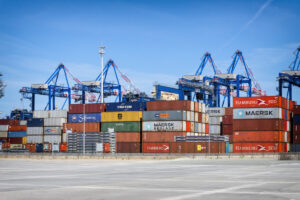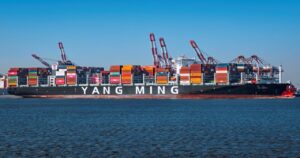Fourkites’ Principal Solutions Consultant Manager, Stephen Dyke, has provided his commentary on the strategic measures companies in the most vulnerable sectors are taking to mitigate risks across the supply chain.
This analysis comes after President Donald Trump’s sweeping set of tariffs on China, Canada, and Mexico went into force on 4 March.
Dyke emphasized that companies are shifting away from ‘business as usual’ purchasing patterns and towards more demand-assured procurement strategies—organisations that are caught with excess high-tariff inventory in the face of declining consumer demand will face significant financial consequences.
He said: “The additional tariffs on China, Mexico and Canada imposed on 4 March are forcing companies across industries to take strategic measures to mitigate risks. The most vulnerable sectors include electronics, machinery, plastics, and furniture, where China has traditionally dominated as a supplier.”
READ: Trump’s tariff proposals set to impact shipping demand in 2025
According to Dyke, in the short term consumers should expect:
- Prices rise when costs are transmitted down the supply chain.
- Extended lead times, especially for customised items.
- Simplified product offers as corporations focus on high-volume goods to reduce inventory risk.
- Shippers will also need to make judgements concerning their transportation. For example, things delivered by 30-day ocean transportation have different cost constraints than those shipped overnight air freight. Companies are reevaluating their logistics networks based on product demand trends and the best transit options for varying quantities. While domestic sourcing has the potential to be a long-term solution in many categories, the move will need time, commitment, and careful planning.
READ: Trump’s tariffs and their consequences
Dyke added that the elimination of the $800 de minimis level would radically alter cross-border commerce, requiring importers to traverse complete customs clearance for nearly 1.3 billion shipments every year that formerly passed duty-free with little formalities.
This shift will increase administrative expenses per shipment and cause major delays at ports of entry as customs agents process a large number of previously exempt items, thereby straining border infrastructure and disrupting supply chains.
E-commerce retailers and direct-to-consumer brands that previously depended on drop-shipping products from overseas would most likely shift to bulk importing into US warehouses for domestic fulfilment, increasing operating expenses and eroding the competitive advantage of ultra-low-cost retailers.
Dyke added: “While proponents argue these changes level the playing field for domestic sellers, the transition will require companies to invest in advanced documentation systems, consider enrollment in trusted trader programs, and potentially redesign their distribution networks to maintain efficiency under the new regulatory framework.”








